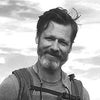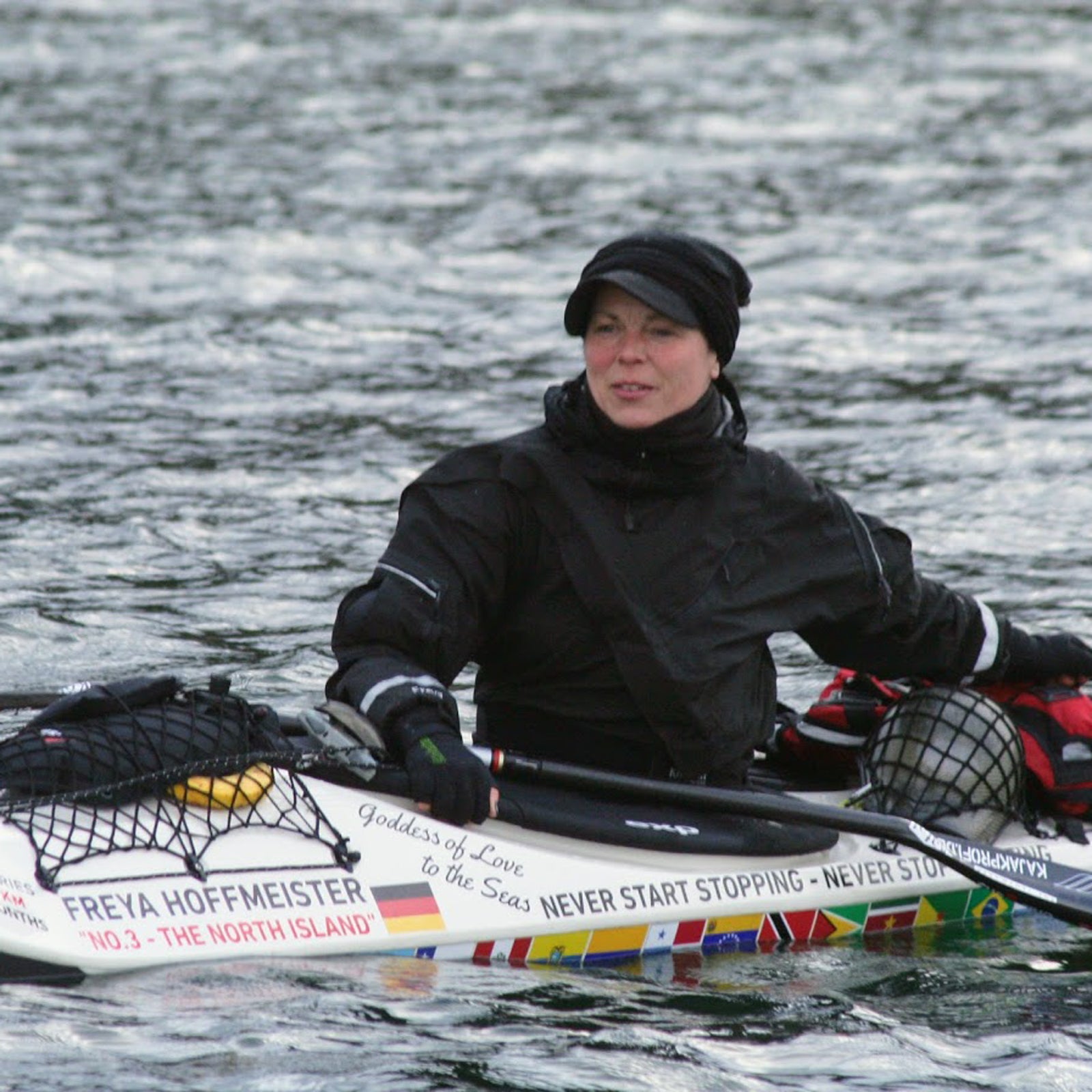For the next decade, ’s kayak will be her part-time home.��The 54-year-old German explorer is less than halfway through a multiyear project to circumnavigate all of North America in her boat, equating to roughly 30,000 miles of ocean paddling. But it isn’t her first time kayaking around a major landmass. She circled both Iceland and New Zealand in 2007,��Australia in 2009, and Ireland in 2016. Between 2011 and 2015, she navigated around��South America off and on. “I like to do big things,” Hoffmeister says. “I’m chewing on the elephant of North America��right now. So far��I like it, and I want more.”
Like a section��hiker knocking out��pieces of the Appalachian Trail over the course of several years, Hoffmeister will paddle around North America for three to five months, then spend three months in Germany working and resting, then do it all over again. The first massive phase of the project took three years, starting in Seattle and ending at��the southern tip of Baja, Mexico. Soon��she’ll head back to Seattle and point her kayak north, navigating��along the coast of Alaska and into the Arctic. “Paddling with polar bears will be interesting,” Hoffmeister says. “It’s about giving them space. People have paddled in polar bear country before, and they’re still alive. I’ll make it.”��
Like most of her past expeditions, Hoffmeister will be traveling alone and��completely unsupported. She piles all of her gear, food, and water into a custom-built expedition kayak that, when loaded for multiple days, weighs about 220 pounds. “It’s like a heavy, stable truck,” Hoffmeister says. She doesn’t listen to music while she paddles (but carries an e-reader for camp), pees in a sponge inside her drysuit, and eats whatever is stocked at coastal towns’ supermarkets when she stops to resupply. If she can, she likes to find a secluded beach to set up camp��but has spent many nights sleeping in her kayak.
Hoffmeister could finish her North American circumnavigation in eight��years—or eleven��or twelve. It’s impossible for her to estimate exactly how long it will take, because it’s��so dependent on weather and sea conditions. On a good day, she’ll spend an average of nine to ten��hours working her way along the coast, enjoying the views, and covering about three miles��an hour. Sometimes she’ll head to deeper, calmer water if the coastline is too rocky or choppy.
Hoffmeister could finish her North American circumnavigation in eight��years—or eleven��or twelve.
Hoffmeister started paddling in a lake in Germany in 1995��when she was pregnant with��her��son, and her passion for the sport—and the length of her projects—grew from there. Iceland was the first large island she tackled,��and Australia��the first continent. “I look at islands the way other people look at mountains,” she��says. “The islands have gotten larger and larger. It’s the same thing with mountaineers. That is the nature of these expeditions.”
She’s also had her share of roadblocks��along the way. While making her way around South America, Hoffmeister inadvertently surfed a massive tidal wave at the mouth of the Amazon at night. She also��battled extreme heat and constant headwinds in the Suez Canal��and sea snakes, venomous jellyfish, and saltwater crocodiles off the coast of Australia. But these things don’t phase her. “I like the challenges,” she says. “I like to do something that people have not done before.”
Hoffmeister is confident that nobody will repeat her South American circumnavigation—or��her North American journey. But toothy crocs aside, Hoffmeister says the biggest challenge of these multiyear expeditions is realizing she’s not getting younger. “I don’t recover as fast as I used to,” she says. “I’m 54 now, I’ll be in my sixties��when I finish North America. I never wanted to believe it, but at 50 your body feels different.”
Still, Hoffmeister is more than capable. She��says her strength and endurance builds as she paddles, and when she’s back home in Germany, she works hard to stay fit, mostly by cross training.��This includes biking, lifting weights, and swimming, activities that give��her body rest from the repetitive motion of kayaking. “These expeditions are doable at my age. The key is to never stop doing it. It’s easy to get rusty and lazy and sad. So��you should never stop,” she says.��
Her advice for others looking to get into expedition kayaking is to start small—although Hoffmeister’s definition of the word might be different from the average person’s. “Don’t start with a continent. Start with a small island,” she says. “I paddled around Iceland, which is a small island, just to see if my body would like it. And it did.”


